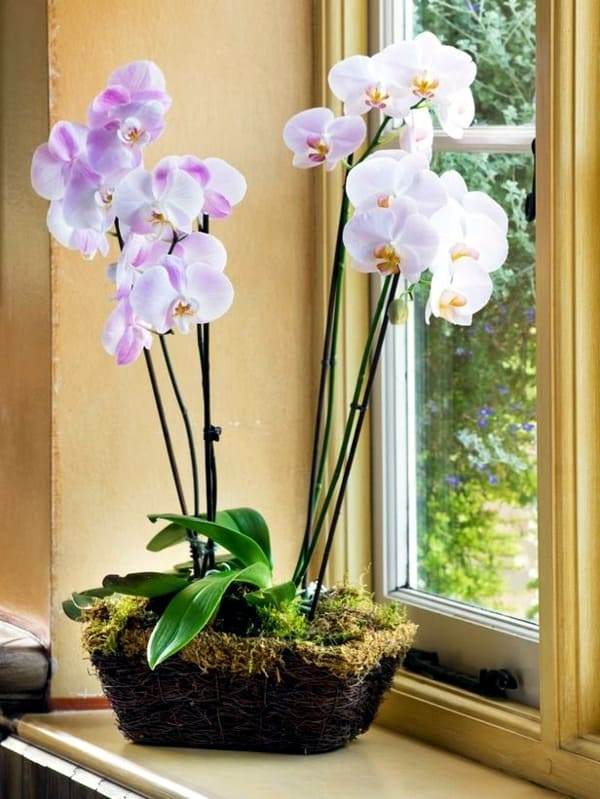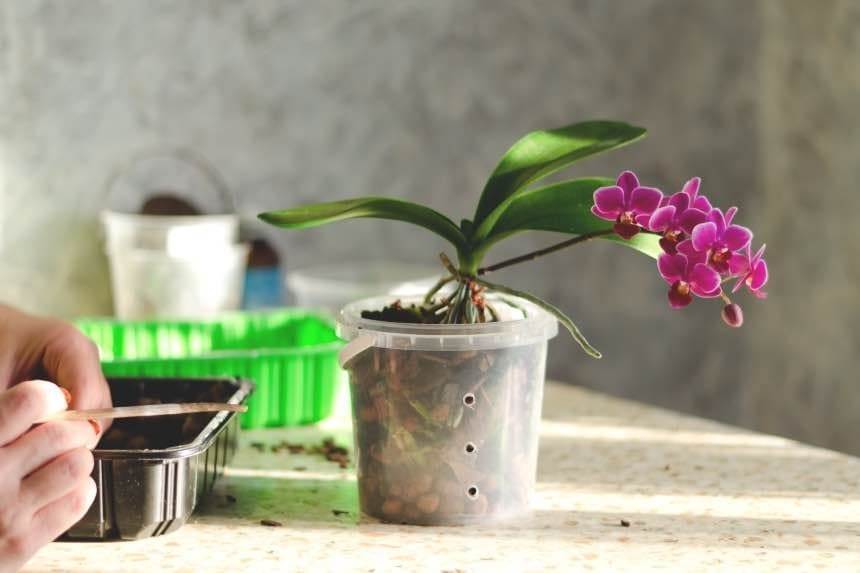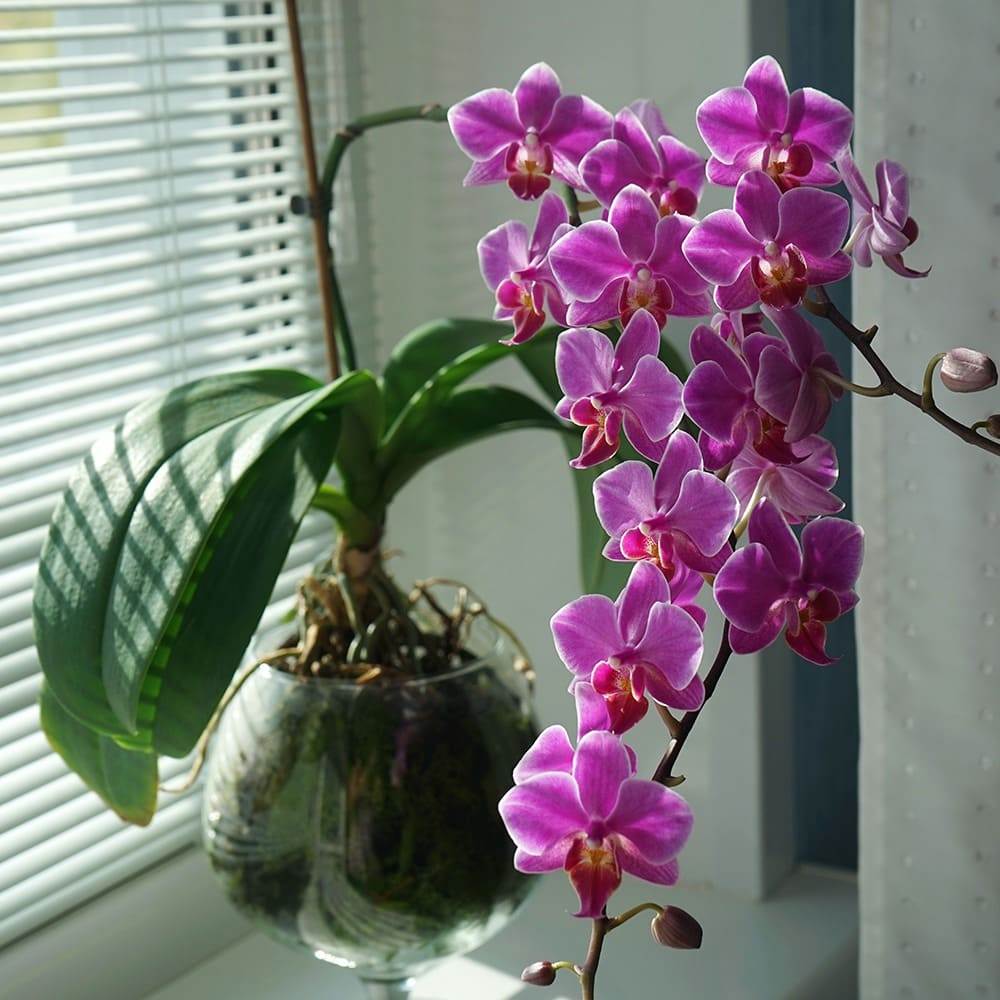Orchids have mesmerized people for centuries with their delicate beauty and exotic allure. However, their enchanting appearance often comes with the reputation of being demanding to care for. There are hundreds of orchid varieties to choose from, but whatever kinds you choose, there are some tips you should follow to create an optimal environment for this striking houseplant to survive and flourish.
5 Dos
1. Provide It With Filtered Light
Orchids are sunlight lovers but prefer filtered light rather than direct sun. They do best if you place them near an east-facing window for morning sunlight or provide dappled shade if they’re outdoors. Ensure they receive the right balance, avoiding harsh midday rays.
2. Water Sparingly
Orchids dislike soggy roots, so a well-draining potting mix is crucial. It would help if you watered sparingly, allowing the medium to approach dryness before rehydrating. Use room temperature water, and aim to keep the humidity around 50-70%. Additionally, orchids prefer a brief drying-out period between waterings.

3. Provide Ideal Temperature And Humidity
Orchids are tropical plants with a love for consistent temperatures. The ideal temperature should be in a range of 65-75°F (18-24°C) during the day and no lower than 55°F (13°C) at night. Plus, maintain a humidity level of around 60%, especially if you’re growing orchids indoors.
4. Fertilize Properly
Orchids are light feeders, and too much fertilizer can lead to salt build-up, damaging their delicate roots. You should use a balanced orchid fertilizer, diluted to half the recommended strength, and apply it during the growing season. Regular fertilization enhances their flowering potential.
5. Repot With Care
Repotting rejuvenates the medium and gives orchids room to grow. They must be repotted when their medium breaks down, typically every 1-2 years. When repotting, you should use a specialized orchid mix with chunks of bark or sphagnum moss for aeration. Be gentle with their roots, removing any dead or rotting parts.

5 Don’ts
1. Overwater
Orchids are susceptible to root rot when their roots stay constantly wet. It’s important that watering should be a careful balance, allowing the medium to dry slightly between waterings. Ensuring proper drainage in the pot is a great way to prevent waterlogged conditions.
2. Expose Them To Temperature Changes
Orchids are sensitive to sudden temperature changes, so keep them away from drafts. Avoid placing them near heaters, air conditioners, or drafty windows is the key. Remember that stable conditions foster healthier growth and blooming.

3. Repot Unnecessary
While repotting is essential for orchid health, you should not be tempted to do it too frequently. Only repot when the medium breaks down or when the orchid has outgrown its container, as frequent repotting can stress the plant.
4. Use Standard Potting Soil
Orchids dislike standard potting soil. It retains too much moisture, leading to root suffocation. It is recommended to opt for a specialized orchid mix that provides proper aeration and drainage. The right medium is critical for their well-being.
5. Panic Over Dropped Flowers
It’s natural for orchids to shed some flowers. Don’t panic if you see a few falling. Instead, trim the spike just above a healthy node to encourage new growth. Orchids often produce more flowers on the same spike.

FAQS
1. Why Are My Orchid Leaves Turning Yellow?
Yellowing leaves can be due to overwatering or underwatering. When you see yellow leaves, check the roots’ health, adjust your watering routine, and ensure proper drainage.
2. Should I Mist My Orchid?
Misting can be beneficial, especially in low humidity environments. Use room temperature water and avoid leaving the orchid wet overnight to prevent fungal issues.

3. Can I Grow Orchids In Low Light?
While orchids prefer bright, indirect light, some varieties can tolerate lower light conditions. So it’s possible to grow orchids in low light, but you should choose orchids that thrive in your specific lighting environment.
4. Why Is My Orchid Not Blooming?
Insufficient light, inadequate fertilization, or a lack of a dormant period could be reasons. To encourage its blooming, you should ensure proper care, including adequate light and appropriate fertilizer during the growing season.
By adhering to the dos and avoiding the don’ts, you create an environment where these exotic blooms can flourish. Orchids are resilient and adaptable, and with the right care, your orchids can survive for up to 15 years and reward you with stunning flowers.
